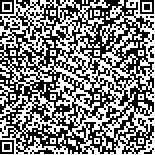| 摘要: |
| [摘要] 目的 通过矫治前后头影测量分析初步评价2D舌侧自锁矫治技术的矫治机理,为临床应用推广提供依据。方法 应用2D舌侧自锁矫治技术对12例成人错(牙合)畸形患者(年龄21~49岁)进行了矫治,其中安氏Ⅰ类轻度牙列拥挤4例,安氏Ⅱ类Ⅰ分类深覆(牙合)深覆盖5例;安氏Ⅲ类前牙反(牙合)3例;非拔牙病例8例,拔牙病例4例(单个下颌牙)。不用排牙实验和复杂的托槽间接粘接技术,不使用不锈钢方丝,只使用热激活超弹性镍钛圆丝、不锈钢圆丝或澳大利亚钢丝,配合颌间牵引及链状皮圈等其他辅助装置用于调整上下颌间关系、关闭拔牙间隙及作一些简单的控根运动。通过7项代表颌骨及牙齿垂直向及矢状向变化的X线头影测量指标来评价该技术矫治前后患者颅颌牙面的变化情况。结果 安氏Ⅰ类错(牙合)矫治前后除上前牙唇倾度外,其余头影测量结果变化无统计学意义(P﹥0.05);安氏Ⅱ类错(牙合)矫治后上下切牙间角从矫治前109°提高到矫治后126°,变化有统计学显著意义(P<0.05);安氏Ⅲ类前牙反(牙合)矫治前后X线头影测量结果表明上前牙唇倾度和上下切牙间角的变化有统计学显著意义(P<0.05)。所有病例在获得绝对隐形矫治目的的同时,也取得了满意的矫治效果,矫治时间11~19个月。结论 应用2D舌侧自锁矫治技术除安氏Ⅰ类牙列拥挤外,安氏Ⅱ类和安氏Ⅲ类错(牙合)矫治后前牙唇倾度都发生了明显变化,故其对成人轻度骨性错(牙合)的掩饰性治疗及牙弓内非大范围移动牙齿的非拔牙病例或个别拔牙病例的矫治均有很好的推广应用前景。 |
| 关键词: 2D舌侧自锁托槽 口腔正畸学 成人正畸 头影测量 |
| DOI:10.3969/j.issn.1674-3806.2010.02.05 |
| 分类号:R 783.5 |
| 基金项目:广西壮族自治区卫生厅科研项目(桂卫Z 2007147) |
|
| Cephalometric analysis of patients with bidimensional(2D)self-ligating lingual brackets technique |
|
ZHOU Yan, FANG Zhi-xin,CHENG Shi-wen,et al.
|
|
Department of Orthodontics,the People′s Hospital of Guangxi Zhuang Autonomous Region, Nanning 530021, China
|
| Abstract: |
| [Abstract] Objective To evaluate the clinical mechanism of the bidimensional(2D) self-ligating lingual brackets technique by comparing the data of the pretreatment and posttreatment cephalometric films and provide the supports to the clinical generalization. Methods Twelve adults between 21 to 49 years old, 4 with Angle classⅠlight crowding, 5 with Angle class Ⅱ1 deep over-bite and over-jet, and 3 with Angle class Ⅲ anterior cross bite were accepted and treated with the bidimensional self-ligating lingual brackets technique. 8 were treated with nonextraction and 4 with extraction. The thermodynamic NiTi round wire, steel round wires or Australian wire but not set-up and complicated indirect brackets bongding technique were used. The intermaxillary elastics and power chains were used to adjust the occlusions, close the extraction space and do some simple torque controlling. Seven cephalometric parameters which represented the sagittal and vertical changes of jaw bones and teeth were used to evaluate the changes of jaw bones, teeth and profiles of patients treated by the bidimensional self-ligating lingual brackets technique. Results The changes of cephalometric parameters except U1 to NA in Angle class Ⅰpatietns were not significantly different(P﹥0.05); U1 to L1 angle changed from 109°to 126° in cases of Angle class Ⅱ (P<0.05); The changes of U1 to NA angle and U1 to L1 angle were significantly different in cases of Angle class Ⅲ (P<0.05). All cases achieved the objective of invisible, and at the same time, gained a satisfactory effect. The treatment time were 11~19 months. Conclusion The changes of protrusion of anterior tooth were significant in Angle class Ⅱ and Ⅲ cases except Angle class Ⅰ when use the bidimensional self-ligating lingual brackets technique. It has a favourable generalizing perspective in the correction of light skeletal malocclusion of adults, some nonextraction cases in which teeth need not to be moved much, and some extraction cases. |
| Key words: 2 dimensional self-ligating lingual brackets Orthodontics Adult Cephalometrics |

